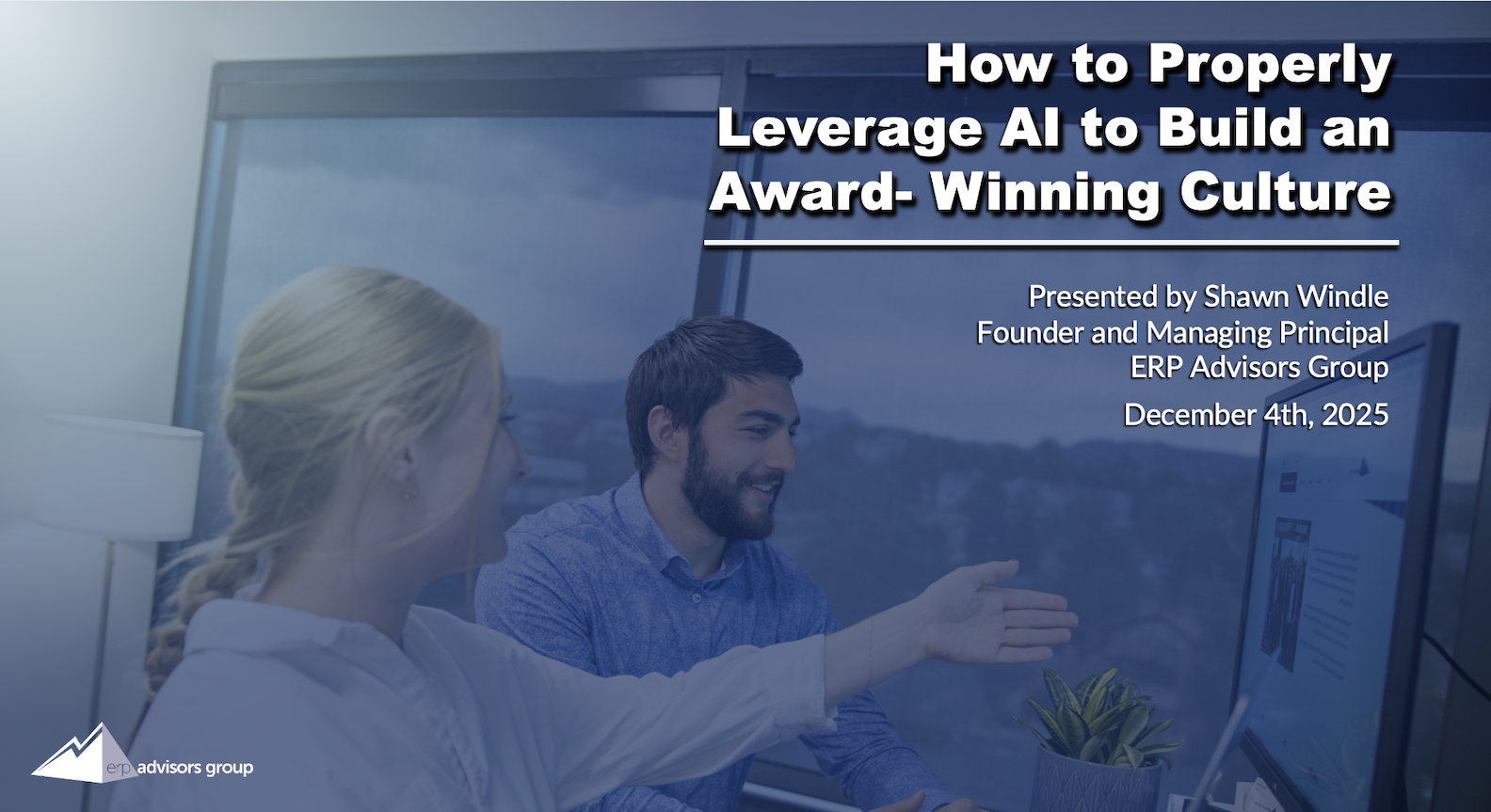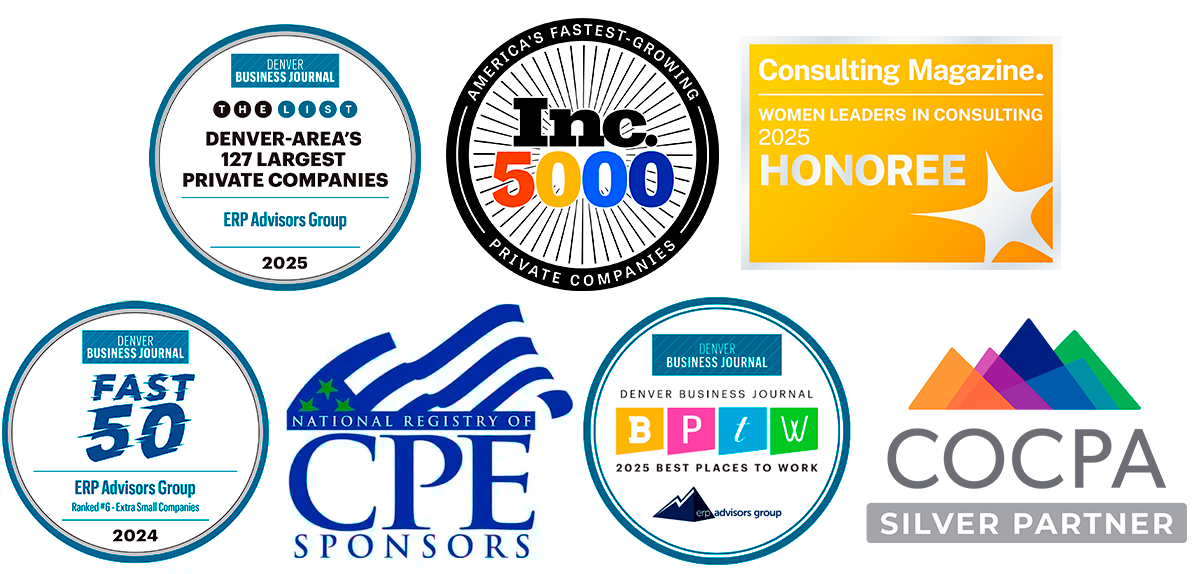
Businesses around the world rely on accounting software such as Xero, QuickBooks, and Sage 50 to grow their businesses. Successful businesses also commonly leverage other point solutions outside of accounting for Sales, Purchasing, Services, Manufacturing and Distribution. However, the pain points from manual workarounds and silos of data make it apparent that disjointed systems may limit the company’s ability to grow. What do successful businesses do who eventually outgrow their accounting software?
Businesses around the world rely on accounting software such as Xero, QuickBooks, and Sage 50 to grow their businesses. Successful businesses also commonly leverage other point solutions outside of accounting for Sales, Purchasing, Services, Manufacturing and Distribution. However, the pain points from manual workarounds and silos of data make it apparent that disjointed systems may limit the company’s ability to grow. What do successful businesses do who eventually outgrow their accounting software?
Small business accounting solutions are typically designed to service organizations with an annual revenue of $1m-$10m. Is your company surpassing that revenue bracket? If the answer is yes, it is probably time to upgrade.
Why Businesses Outgrow Their Accounting Software
Business Growth
Your accounting software may not be built to handle the level of production that comes with business expansion. Scenarios like increased transaction volumes, expansion into new markets, or the development of a new product line can signal the need for a new solution.
Growth via mergers or acquisitions is another transformative event often requiring more sophisticated accounting software. Financial management and tracking requirements can evolve during this time, especially if your company is purchased by a PE firm or acquires a smaller organization.
Legacy technology
Regardless of system complexity, most ERP providers have been sunsetting software programs, meaning the vendor is no longer selling these solutions or providing invaluable support. The reason for this is most often because the provider is encouraging a move to their cloud systems.
If this is the case for your ERP provider, you must consider the future of your company. Sometimes this means making the transition to the cloud, or at least to a more sophisticated solution where you can benefit from modern technological advancements such as artificial intelligence tools. If you do not confront this reality, you may find your company utilizing unsupported software and eventually losing data because of it.
Regulatory
Your ERP must comply with government accounting rules, so it is important to make sure yours does. Older applications may no longer be able to support new requirements as they come out, especially if the product is only receiving minimal support.
New leadership
Additions to your company’s leadership team — such as a new CFO — may want to mandate the use of a new ERP system. They may have experience with higher tier software and believe these upgrades are necessary. If this is true, it is important other members of the leadership team are convinced of the need to change, too. Once everyone is on the same page, you can start the ERP selection process.

How to decide if you need to upgrade:
- Understand your current scene: How does your company currently operate? How are all of your end-users impacted by the current software, and how are they using it?
- Identify what’s wrong: What is not working in your current operation systems? Usually, this can be identified by speaking with the users in your organization.
- Determine the ideal scene: What do you want to see from your company in the future? What are the ultimate goals as a whole?
- Identify expected benefits of new software: What do you specifically hope to gain from a new ERP system? What real changes will come from this new system replacing your old one?
- Estimate the total cost of ownership:
- Cost of software
- Cost of data migration
- Cost of the implementation of the software
- Cost of project management assistance
- Cost of changing hardware if necessary
Pro Tip: Even if you are not aware of an exact price, do your research and come up with rough estimates to put the project into context.
- Ensure benefits exceed the costs: Do the gains that come from implementing the new system outweigh the financial risk and cost?
- Assess change management risks and identify mitigations: What can you and your team do to mitigate change risks to each group of end-users?
- Get agreement among key stakeholders: Are stakeholders invested in the process? Do stakeholders see the need for a new ERP system? If they do not, you will not get anywhere with your project.
- NOW start the selection: Ready to begin? Let’s start the process.
As you go through these steps, it can be helpful to engage an Independent ERP Consultant who understands how to identify your exact needs, the associated costs and risks, and the various solutions available on the market.
Familiarize Yourself with What’s in the Market.
We have identified four tiers of accounting applications based on annual revenue of the business the software provider is designed to service. There are many variables to consider when developing your software shortlist, with different ERP software solutions best suited for your unique needs.
It is important to choose an application that best suits the size and requirements of your specific company.
- Tier 1 ($500m+ per year): Provides ERP for very complex operations and has high transaction processing.
- Tier 2 ($50m-$500,000m per year): Services companies requiring deeper functionality and some process customization.
- Tier 3 ($10m-$50m per year): Integrates accounting with other departmental functions, providing rich general ledger capabilities.
- Tier 4 ($1m-$10m per year): Keeps the books for a single company.

Financial Reporting Tools
There are numerous types of financial reporting tools in the market, and some specific solutions to your pain points may not come out-of-the-box in your current accounting software. Additional tools may include:
- BI & Data Visualization
- Financial Planning & Analysis (FP&A)
- Multi-Company Consolidation
- Financial Close Solutions
When you are selecting accounting software, be sure your new platform has ALL of the tools your business needs or at least can integrate with external solutions.
Our Software Selection Approach:
If this is your first time selecting an ERP solution, it is helpful to have a breakdown of what tasks are involved. The process can be complex, so we condensed all major components of the ERP Selection Process into simple milestones to help you with your project.
Initial vendor contact vetting
This is when you will conduct initial research on potential vendors. It is the first step in narrowing down your options. You can start with a simple internet search, contacting advisors like us, or looking to peers in your industry.
RFI vetting
Once you have created your Request for Information, or RFI, you will be able to send this to multiple vendors. This will ensure standardization of vendor responses because each vendor receives the same information.
Establishing a thorough and relevant RFI establishes your control of the ERP process. Without a comprehensive RFI, vendors will not be aware of your needs or expectations and may not be able to meet them.
Mini demo vetting
The quality of the mini demos will determine which vendors will be selected as finalists.
Create a demo script and hold vendors to it. You and your company are the most important factors in this ERP process, so make sure your questions are being answered and voices are being heard. This will hold the vendors accountable, ensuring they show you what you ACTUALLY need to see.
Final demo vetting
We recommend inviting only 2-3 vendors onsite for final demos. Limiting your options will significantly decrease the time it will take you and your team to decide on a vendor.
Final selection due diligence
It is finally time to select your ERP vendor based on their offerings, preparedness, and support. Be sure the leadership team is actively participating in the decision-making process. These will ultimately be the forerunners of this entire process, so it is important everyone is on the same page.
Final Tips
- Do not contact software vendors until you know what you need. Software vendors won’t understand your business the way you do, so it is your job to drive the selection process by telling the vendor what you need. If you are unsure of your requirements, vendors will rapidly turn into one-track salespeople, telling you what they think you need.
- Don’t change software unless you absolutely need to! It is an expensive and complex process, so do not force a change if it is not necessary.
- Finish the implementation as fast as possible, but don’t forget to test the system. Testing your software is a vital step in ensuring that your ERP implementation is a success.
As independent ERP selection and implementation consultants, ERP Advisors Group suggests only has your best interests in mind. Change isn’t always necessary, so why go through the process if you don’t need to yet?
Finally, call us if you need any help! We exist to serve our clients the best we can, so do not hesitate to reach out to us at any point in your ERP journey. We offer free consultations to discuss your business and its pain points.





